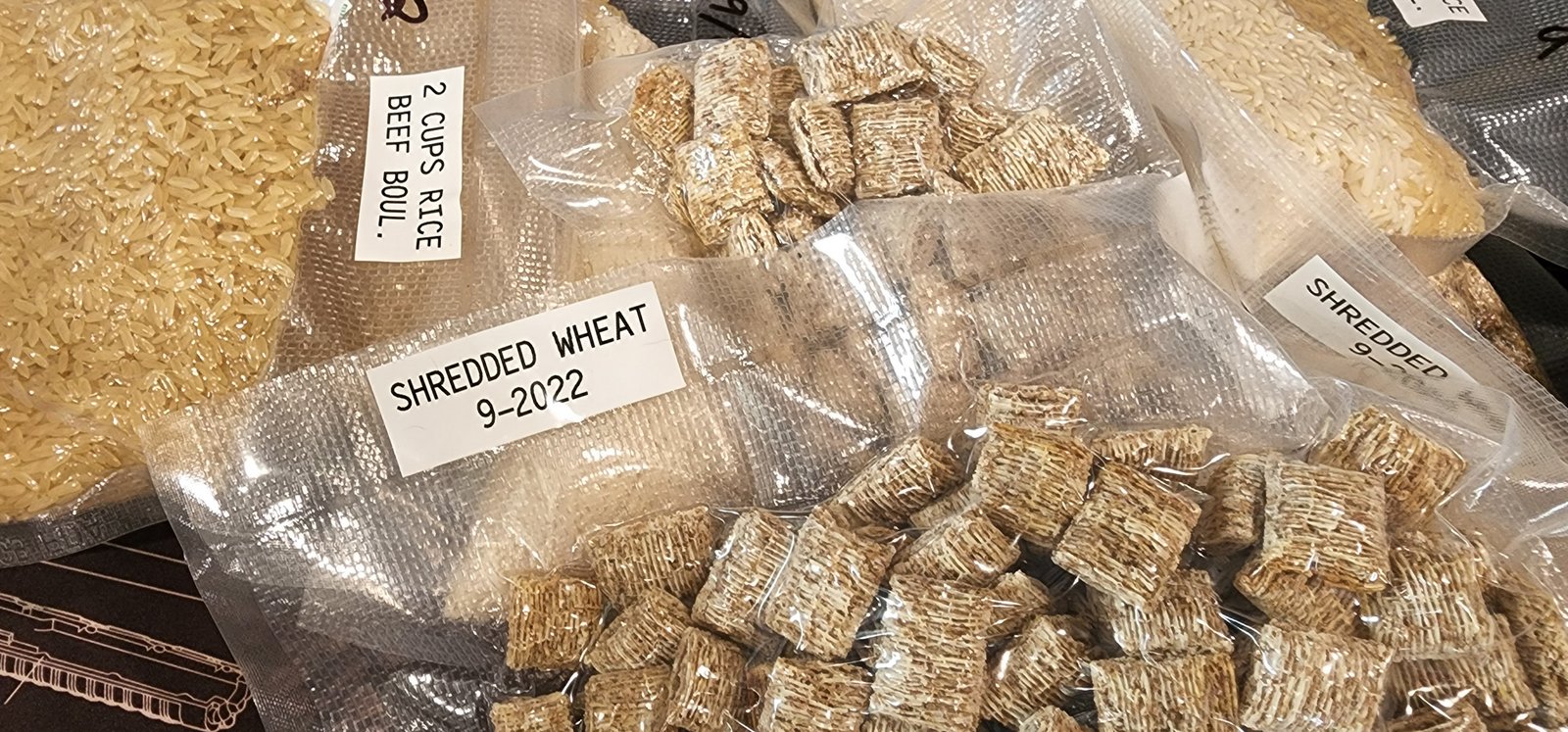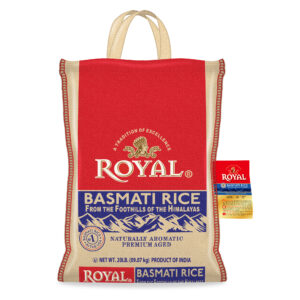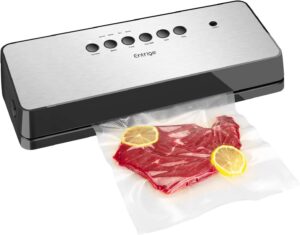Unless you’ve got the storage space and the budget to stock supplies like in the picture shown here, you’re going to need to start thinking about how you need to break down your food purchases for consumption and storage.
Author’s Note: This article follows up on a previous article about buying food for long term storage. (Click here to read.)
There is another article about how to make the most of your storage space you might want to check out. Read it here.
Author’s Note: If you DO have that budget and space, we need to be friends. I’m just sayin’
Most of us don’t have this much space, nor the budget to buy food in huge quantities, but you still probably realize the benefits to buying in bulk. Bulk food is cheaper and you can put away more meals for the dollar than shopping retail from the grocery store in smaller quantities.
Long-term storage of food has its own set of challenges when you start thinking about bulk foods, and those challenges present more severely when you’re working on a tight budget.
- You have a larger amount go bad at the same time.
- It still has a shelf life that has to be considered.
- You have to have room to store it in a grid-down scenario without power.
There are other challenges, but let’s start with these and talk about how we can remedy them.
What do I mean by Bulk?
Your definition and mine may vary, and that’s ok. You might be looking at a staple item like grains, rice, oats, etc and think that 10 pounds is a lot. Maybe you just REALLY love oatmeal and you want to buy in 100 pound bulk bags. Whatever your idea of bulk is, that’s what you’re going to have to work with.
For this article I’m going to focus on something simple: Basmati Rice.
Currently when I think of things like rice and grains, I look for anything in 20 pounds bags or larger. They’re semi-affordable compared to buying by the small bag, but they’re not going to break the bank. I can buy a twenty-pound bag of basmati rice from Walmart for about $21, that’s about a dollar a pound.
Why Basmati rice? Well, because it stores a long longer than brown rice. White rice, when stored properly can last up to 30 years. Brown rice will max out at about five years.
Could I buy it in 200 pound increments? Sure, absolutely! But make REAL sure you’re getting a deal! I searched all over the web for discounts on things like Rice and you get some great promises…. that will break the bank. Most of the “wholesale” companies sell things like rice at prices actually HIGHER than retail! So shop smart!
So now you’ve got your twenty to forty pounds of rice. Now what? If you leave it in the bag it comes in, it will have mice within weeks or months.
One option is to use a food-grade bucket and simply seal it up. That’s an idea, but consider that when you open it up to use for the first time you’re now going to have twenty pounds of rice you can’t reseal that you need to go through before it spoils.
So maybe some better planning is in order.
Consider a Vacuum Sealer
Vacuum sealing food is very easy to learn, takes very little practice, and it’s not hard work. It also happens to be fairly cheap compared to other methods in the long run.
Start with getting a vacuum sealer. Maybe you know you’re going to love this and you want to rush right out and pick up the nicest one on the market. My personal approach is go by the reviews of other people that have shopped before me. If 3,500 people liked it and 45 didn’t, it’s probably a solid purchase. If 87 people all gave it 5 stars and that’s all the reviews it has, you can almost bet those are bogus reviews.
Entrige Vacuum Sealer on Amazon
I scoured Amazon for reviews and at the time of this writing, this one shown here (click to see it on Amazon) was $49 and had over 10,000 reviews. That’s pretty good in my opinion.
While you’re shopping, you’ll need to pick up some vacuum seal bags or some Mylar bags. Both have their place and we’ll cover that later on, but for this method you can use either interchangeably.
You’re also going to need some oxygen absorbers to go with that. I bought these here.
I picked up a combo roll of 8 inch by 50 foot, and 11 inch by 50 foot for $16.14. I’ll help you do the shopping math so you can figure out what your rice will cost you in the end.
Cost Analysis
Rice is $22 for 20 lbs, but no one measures rice by the pound. They measure it by the cup. I know from experience that 20 pounds of rice equals 48 measured cups. So it costs me $0.46 cents per cup and a cup of rice is about one serving.
You can use either the 8 inch or the 11 inch vacuum bags, depending on how you want to sort and stack your rice when you’re done, but if you buy what I bought, it comes down to 100 feet of vacuum bag material for $17.00.
I learned through trial and error that 2 cups of rice will fit comfortably in a 9 inch vacuum bag once both ends are sealed and 1 cup will fit in a 7 inch bag with no problem. So out of that package I’ll get an absolute minimum of 150 bags with an average size of 8 inches long. That comes down to a cost of $0.11 cents per 1-cup package.
The oxygen absorbers were $16.00 for 100 and you need about one 100cc absorber per package of rice. (One oxygen absorber in a 200cc size will do 1 cup or 2 cups with no problem.)That’s $0.16 per package.
Aside from the cost of purchasing a vacuum sealer the first time, my cost to sort, measure, pack, deoxygenate, and store 20 lbs of rice comes down to $0.73 cents per 1 cup package of sealed rice. One cup of basmati rice is about 7.4 ounces, so my rice costs approximately 10 cents per ounce, or $1.60 per pound (not counting my time).
Compare that to shopping at a retail store. If you go to the store and pickup a single package of boil-in-bag rice, that runs you about $2.91 per pound.
Buying the rice in 20 lb bags, PLUS the cost of bags PLUS oxygen absorbers means my rice is still $1.30 per pound cheaper than buying it in a regular sized box AND it will last 30 years or so. Plus I have the benefit that it’s all now stored in small 1-cup and 2-cup serving sizes.
If you’re a math geek (like I am, I can’t help it), and you consider the cost of the vacuum sealer was $49 and factor that in to the cost of sealing and storing rice (not to mention anything else you ever choose to store with it), then after the first 38 cups of rice I’ve packed away, I’ve paid the same for those 38 cups as I would if I’d bought them retail. Everything after that is free use of the vacuum sealer for life…
There’s no doubt vacuum sealing food is a win-win for me. If this vacuum sealer breaks in six months, I’d be fine buying another and throwing it away. Or if circumstances freed up some more funds, maybe I’d purchase a nicer unit. Either way, I’m putting away food for my family for CHEAPER than the cost of purchasing the same food in normal quantities, just by buying 20 lbs of one bulk item.
Vacuum sealing food is a great thing, even if you’re not doing emergency prep. You can vacuum seal soups and meats to prevent freezer burn and normally about triple their shelf life in the freezer! That becomes important when you’re considering other long-term prep solutions such as bulk beef you need to freeze for a LONG time without consuming. If you freeze fresh meats in the freezer, they are considered good for 1-12 months. If you vacuum seal those same meats, the range goes from 1-3 years.
Some examples of storage times for frozen meats are:
- Beef, Wild Game: 18-36 months
- Ground/Minced Meat: up to 12 months
- Sandwich Meats: 4-6 months
- Poultry: 18-36 months
Food Saver has a great quick reference on lifespans of vacuum sealed foods you can check out here.
How to use a vacuum sealer
You laugh now, but YouTube University is a great source for all things prepper while you still have access to the internet. Messing around with food storage can be an expensive mistake to make, both financially and in health-related terms.
There are plenty of how to videos, but this is a pretty decent overview you can use to get a headstart on learning how to use your vacuum sealer.
How to store your foods:
If you’ve researched the idea of using food grade buckets and oxygen absorbers, you might be considering this for your vacuum sealed dry goods. My advice is to save your money! You definitely want to use a bucket simply because you need a way to conveniently move and store something like 20 lbs of rice. However, everything you’ve done thus far has already sealed each package away from oxygen. You only have three more considerations to worry about.
Just three, right? Don’t worry. These are easy ones!
Rodents:
You don’t want mice or bugs in your dry goods. Ask me how I know that mice will eat through ANY kind of food packaging…. Putting your rice in something like a 5-gallon bucket or a storage bin will keep it away from rodents. Just do it. You’ll thank me later when you open these up in 15 years and they’re still usable.
Light
Light is the enemy of all stored foods. If you use Mylar bags for your vacuum sealing, you’re one step ahead because mylar bags perform just like vacuum bags except they are impervious to light, so they’ll keep food fresher longer. The other alternative is to just put them in a bucket with a lid. It doesn’t need to be food grade because the packages are already sealed. Any cheap bucket from a hardware store, or storage tote, will suffice just fine.
Temperature/Moisture
This should be common sense, but hey, some of us learn the hard way. Foods put away for storage still need the same considerations as they do in your pantry. Keep them in a mild climate (indoors, not in your attic), and keep them in a place free of excess humidity.
If you found any of this useful, please take a minute and use the contact me page to let me know you enjoyed the material. It’s always good to get feedback from readers! I’m doing this for you guys, right? Feel free to drop me a line any time and share your thoughts.
Have Something to Share?
Feel free to share your own tips and tricks for other readers in the comments section below. Have enough for an article of your own? I’ll be glad to post it if it’s in-line with the other content we have here. Use the Contact Us page to get in touch!


